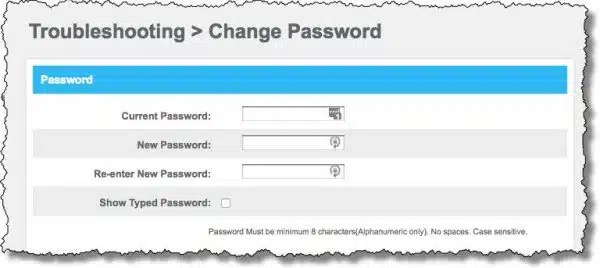If I could have you do one and only one thing to your home network to improve security, changing your router’s default administration password would be it.
Particularly if you have an older router on which the password has never been changed, it’s a vital step to protecting the equipment you have connected to that router. On those older models, the default password was very likely the same for all routers of the same model from the same vendor. For example, if you had brand “X”, then the login for all of them was an empty username and a password of “admin”.
The problem is, everyone knows that, or can easily figure it out, including the bad guys. So malware does exist that uses that information to compromise your router, your network, and your computers.
Now, I’m not talking about your wireless password — that’s important, but it’s lower down on my list. The password I’m discussing here is the password you need when you access your router’s administrative interface. Usually that’s done by going to a special IP address in your browser – something like http://192.168.1.1, though this varies. Once there, you need to specify a username and password. Once you log in, you can configure your router.
Once a malicious hacker logs in because you never changed the default password, they can wreak havoc.
Unfortunately, I can’t tell you how to do it. The steps vary depending on exactly what router you have. Check the manual that came with the router. If you don’t have that, look for it on the router manufacturer’s website.
As I said, it’s the first thing I would have you do. The rest … well, that’s more than a “tip”, and is covered in the Ask Leo! article: 7 Steps to a Secure Router.


Leo….in order to log into my router, I thought I would have to be logged into a PC that was already connected to the router. Are you saying that is not the case?
thanks Leo
john ruelle
You do need to be ON the network connected to your router. That doesn’t always mean logged in. Best example is malware – there is known malware that can infect a PC that will then go looking for the router used by that PC. It’ll try all the known default passwords, and if it discovers one that works it can then start to play with the router. ANY device connected to your network could, in theory, do this.
Thanks, Leo.